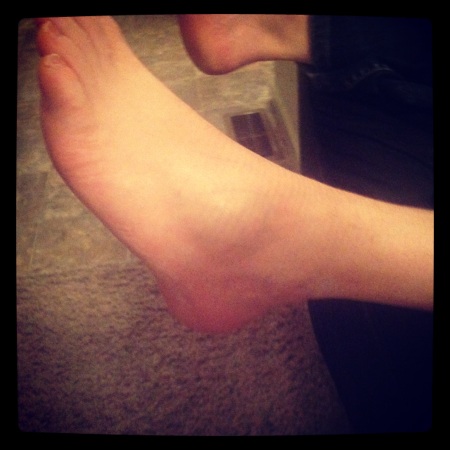
by Matthew Loomis
Today marks exactly the 8 month anniversary of Kaboomis Copy.
To celebrate this occasion, I decided to share 8 things about freelancing I have learned along the way (so far), and offer them as helpful tips for other freelancers.
This series of freelance tips will be helpful for two types of people:
1. Current freelancers who want to grow their business.
2. People with jobs who are seriously looking at going freelance full-time.
If this is you, let’s jump right in.
Visions of Freelance Bliss
Many people who have never been self-employed dream about doing the work they love from the comforts of home and actually getting paid for it. They smile from one wet ear to the other wet ear when they talk about it. It’s pretty adorable, actually.
I used to be one of those gullible souls. Nothing wrong with that. We all have dreams, but we often don’t know the full scope of what it takes to reach them.
Some people get thrown into freelance due to a job layoff, which is like learning how to swim after being dropped into the middle of Lake Erie.
If that’s you, don’t panic. Other people’s freelance mistakes and hard knock lessons can serve as a flotation device for you.
If you are still employed, count your blessings, but make sure you start taking swimming lessons NOW, so you’ll be able to jump into freelancing prepared.
True Short Story that Opened My Eyes
A few years ago, I was working as a staff writer for a well-known televangelist. Suddenly, my managing editor at that time announced he was leaving the job and diving into full-time freelance writing from home.
I thought this was pretty cool. He was going to “live the dream.”
We stayed in touch. Emails. A few phone calls. A lunch. I followed his blog that first year. Things seemed to be moving along for him in a positive direction.
I was surprised when he published a blog article a year into his freelancing called The Year of Falling Apart. Thank God he had the courage to share this. (His article has been recently updated.)
Extra Bonus Tip For Freelancers
My friend’s first year of freelancing story has been helpful to me. How so? Because it reminds me to enjoy the freelance journey as you grow.
Working as a freelancer is not for everybody. If you value predictability, a steady stream of income, being around a bunch of people every day, or free donuts, then maybe you need to stay in a job situation?
I almost included “safety” in my description of a job, but in today’s world, is that really true? How “safe” is it to have your income completely in the hands of other people and at the mercy of one source?
Just something to think about. If you’ve read this far, you are probably serious about freelancing.
Remember that freelancing is not a destination. It requires much from those who choose the adventure (like self-discipline and courage.) You will encounter many highs and lows along the way. (Dry spells. Difficult clients.) But, if you will listen to what my friend is telling you through his story, and take heed to the freelance tips and stories I’ll be sharing over the next few weeks, you can learn to persevere and be a successful freelancer.
Practicing this bonus tip of enjoying the freelance journey will strengthen you and you will start…
- Tapping into your faith and believing your needs (bills) will be met
- Defining what type of work you want to do
- Determining the monetary value of your time and your talents
- Setting boundaries with clients
- Refusing to be all things to all people
What Is Your Freelance Dream?
The tips I’ll be sharing work for all types of freelancers.
Accountants. Architects. Illustrators. Photographers. Tutors. Typists.
I happen to work as a Copywriter.
At first, my plan was to cover all eight tips in one article. But it became clear this topic needs to be a series.
So today, we will cover Tip #1. If you haven’t subscribed to my blog, you should. That way, you’ll be sure to capture all 8 tips over the next few weeks.
Now, let’s start with the most obvious of the eight tips. Some of you already know this, but many of you still don’t get it. And some just need a reminder.
This tip is crucial. Don’t take it lightly.
Successful freelancing tip #1: Courageously Network Online & Face-to-Face
Sounds simple and obvious. Almost makes you want to say, “Duh.” But how many people actually do this CONSISTENTLY, month after month, and year after year?
Only the successful freelancers.
Networking is absolutely vital if you want to grow as a freelancer. Just like any other business, customers do not come knocking on your door through osmosis.
There are two primary ways to network–by internet or in person.
Millennials and introverts love the internet. Extroverts and baby boomers like getting out and doing it face-to-face.
You need both, regardless of your personality type.
Networking With the Internet (Specifically Social Media)
A website is important, but that’s like your home online. If you never leave your home, you will lose money.
Here, I’m talking about networking online through social media platforms like Twitter, Facebook and LinkedIn.
Let’s start with LinkedIn.
As I said in an earlier blog, before freelancing, I didn’t pay much attention to LinkedIn. But it didn’t take long for me to see how useful this social media platform is for the self-employed.
So, I revamped my profile and started using LinkedIn.
In fact, my profile ended up in the top 5% most viewed profiles of 2012. What’s amazing is that I didn’t even start using LinkedIn until July, so all that 5% action happened in 6 months. I obviously tore up LinkedIn.
But there’s a reason why I did and continue to do so.
Results.
Several great business relationships I’ve made started and evolved through LinkedIn. Clients are found here. Seeds I have planted along the way continue to grow and produce fruit, thanks to LinkedIn. Some relationships are still incubating, but I know they will eventually lead to paying projects.
You never know how quickly each relationship will develop, but if you will patiently tend to your LinkedIn profile, good things will happen.
Some day I’ll write in more detail how to network using LinkedIn. I use some uncommon techniques.

You also should be using these other social media platforms:
Twitter – Not only can you meet new clients here, but this is also a must-have tool to market yourself. Awhile back, I gave some tips on how to do this.
Facebook – Some freelancers spend little to no time here. My take on it is this: As long as Facebook continues to have a mega audience, I want to make sure my business has a presence there.
Glad I do. A couple of clients have come through here.
So when it comes to Facebook, remember: Visuals are important for getting the best ROI with your Facebook business page.
Speaking of Facebook, I also am a member of a forum for copywriters of all persuasions on Facebook. This is a great place for me to “network online” and learn from others in my freelance field who are going through the same things I experience.
Also, I get lots of motivation through this forum by reading posts from other members who share their successes. Many times, after visiting this site, I am fired up and ready to press on to greater levels of success. And it’s really cool to receive support from other writers when you need a little encouragement.
Whatever field you freelance in, find a forum like this to network.
Google+ – Surprised? You shouldn’t be…. Freelancers who know the latest on this unique platform have gotten over themselves and started using Google+ consistently. Some freelancers still think it’s a waste of time–to their detriment.
Copyblogger has been putting out some great articles on Google+ lately. You should check them out if you want your freelance business to rank high in SERPs and not get left behind in the SEO jungle.
Another social media platform to network with is Pinterest. I hear it’s a good place to be, but I haven’t set up there yet. But I will.
Be sure to treat each of these social media platforms differently. Each has its own unique personality. Study up on those differences.
Okay, so all of this sounds great for those who don’t want to leave their house and just work their freelance business from a computer, doesn’t it? Sure, that can provide a certain amount of business, but I don’t recommend using it alone.
Despite our awesome technology, you should still do this…
Network Face-to-Face with People

One of the best things I’ve done to help market my freelance business is to join a networking group. Last September was my first meeting. Ever since then, once a month, I get out of the house and I go to this midday meeting. I wear something nice and make sure I have plenty of business cards to hand out.
In person meetings like these not only help you find clients, they also do a lot to help you believe in freelancing. How? Well, you will be forced to publicly talk about your business. You may feel funny at first. Lack some confidence. But, if you will keep showing up to these meetings and persistently talk out loud about your freelance business, your confidence will grow.
For me, not much seemed to be happening the first couple of meetings. But over time, I have developed several great relationships. And here’s a bonus–a couple of these relationships have already led to paying projects. Others will eventually.
Don’t try to figure out all the details. Just go to your networking meeting and generously give yourself away. Inbound market yourself in the flesh.
There are all sorts of networking groups you can join. Determine which one(s) will be a good fit for you. Consider the type of service you offer and the type of folks who will be attending.
Networking clubs can be large, city-wide groups that are easy to join and provide social events during evening hours, while others are niche groups you may have to qualify for based on religion, industry, political affiliation…lots to choose from.
The group I attend these days is a spiritually based group. Whatever group works for you, do it.
Since joining my group back in September, I keep finding new benefits . Each meeting, I not only get to continue developing relationships with other professionals in various industries around my city, but there are always new people to meet at every event.
I met a client through this group who has sent me three projects so far in 2013. We enjoy working together, and he’s someone I respect and actually learn from, because he’s been a full-time freelancer for almost twenty years. He is living proof that the freelance dream is possible.
Meanwhile, another guy I met through this group asked me to serve on the board of his charity, because the mission of his organization is something I’m passionate about. I do some pro bono work for them, which is a win-win situation. And, since I started serving on this board, I’ve met additional quality people. Made some new friends.
Plus, it gets me out of the house even more. I don’t feel cooped up and cut off from society as I work from home, thanks to these two groups.
So, if you are concerned about feeling lonely and isolated as a freelancer, be sure to JOIN A NETWORKING GROUP.
Last Key Point: Don’t rule out networking with others in your field. I have received referrals from other copywriters. I treat these word of mouth referrals, whether from other copywriters or from anyone else, like GOLD.
I have also received projects from other copywriters who needed some help with their workload.
So, treat others in your field REALLY WELL. Don’t be stuck up or try to hoard everything. That’s doesn’t get you anywhere.
Wrapping Up Tip #1
Be sure to incorporate networking, both online and face-to-face, into your freelance business plan. Have you done that? What’s holding you back? Have you seen results doing this? Tell us in the comments below.
P.S. Next week, we will continue with more Free Tips for Freelancers. Seven more tips coming your way–if you are subscribed to this blog. If not, you might miss them.





















